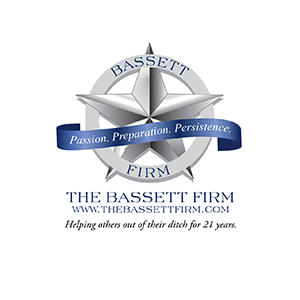In Texas, independent contractors and their employees can hold property owners liable for premise liability and/or negligence if the property owner maintained some control over the manner in which work is performed on the property and failed to warn about dangers on the property that the owner should have reasonably known. This type of claim requires that the property owner was negligent in hiring the contractor and the contractor was negligent during work on improvements to the property.
Recently, the Texas Supreme Court addressed whether a negligent hiring claim falls under the Texas Civil Practice & Remedies Code, Section 95.00. Section 95.003 provides that a property owner is not liable for the personal injury, death, or property damage to a contractor, subcontractor, or an employee of a contractor or subcontractor who “constructs, repairs, renovates, or modifies an improvement to real property including personal injury, death, or property damage arising from the failure to provide a safe workplace unless:”
(1) the property owner exercises or retains some control over the manner in which the work is performed, other than the right to order the work to start or stop or to inspect progress or receive reports; and
(2) the property owner had actual knowledge of the danger or condition resulting in the personal injury, death, or property damage and failed to adequately warn.
In its decision, the Texas Supreme Court determined that a negligent hiring claim does in fact fall under Section 95.003 if the negligence comes from the “condition or use of an improvement to real property.” Endeavor Energy Res., L.P. v. Cuevas, 62 Tex. Sup. J. 928, 4 (Tex. 2019).
In Endeavor Energy Resources, L.P. v. Cuevas, the survivors of Angel Cuevas (an employee for Big Dog, a company drilling a well on Endeavor’s property) sued Endeavor for, among other things, ordinary negligence and premise-liability after Angel was hit in the head by a pipe and killed. The trial court granted Endeavor’s motion for summary judgement which the Cuevas family then appealed. The Court of Appeals reversed only the negligent hiring claim, holding that the Chapter 95 does not apply to the negligent hiring claim because that claim arose from pre-injury negligence and not negligence occurring at the same times as the injury on Endeavor’s premises. Endeavor then petitioned the Texas Supreme Court for review on the issue of whether Chapter 95 applied to the negligent hiring claim. The Texas Supreme Court reversed the Court of Appeals.
In Texas common law, a property owner can be held liable for negligence or premise-liability that harms an independent contractor or its employee if the property owner had control over the work and had knowledge or could have reasonably known of the danger. On the other hand, Section 95.003 goes further and requires that the property owner must have actual knowledge of the danger. The Cuevas family disputed actual knowledge should be required for their claim, arguing that Section 95.003 did not apply since the negligent hiring did not “‘arise from the condition or use of an improvement to Endeavor’s real property.”
The Texas Supreme Court disagreed and held that the negligent hiring claim brought by the Cuevas family required proof that Big Dog Drilling’s use of the improvement that killed Angel Cuevas was the cause of his injury. If a property owner negligently hires a contractor who then creates a risk while the property owner retains control of the property, a party injured by this negligence can only recover damages if, (1) the property owner exercises or retains some control over the manner the work is performed and (2) the property owner had actual knowledge of the danger or condition resulting in the harm and failed to adequately warn the Plaintiff.
Going forward, the Endeavor case has two big takeaways for a property owner that decides to hire an independent contractor and their employees to perform improvements to the owner’s real property. First, the protections of TRCP Section 95.003 apply to a negligent hiring claim. Second, when the contractor hired by the property owner causes harm through its work on the property, and the owner exercises or retains control over the manner in which the work is performed, a Plaintiff can recover for injuries from that harm if the Plaintiff can prove that the owner had actual knowledge of the change or condition and failed to give adequate warning.
Sources:
Tex. Civ. Prac. & Rem. Code § 95.003
http://www.cooperscully.com/news-and-resources/articles/who-is-a-property-owner-under-chapter-95
Endeavor Energy Res., L.P. v. Cuevas, 62 Tex. Sup. J. 928, 4 (Tex. 2019).

